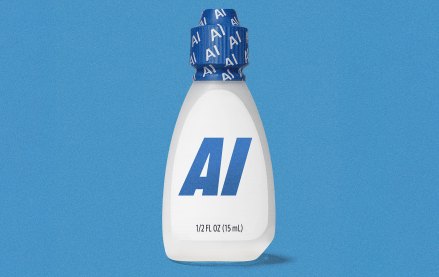
Marshawn Lynch led the Seahawks to a 36-16 win over the Packers Thursday night, swerving through Green Bay’s defense to rack up 120 yards rushing and two touchdowns.
You didn’t have to catch the game live to see the highlights, though. Nor did you need to wait for it on SportsCenter. NFL Now served it all up online Friday as part a 90-second “Need to Know” recap. Following that were four minutes from a recent Bill Belichick press conference. Also on offer were Fantasy updates and other “Can’t-Miss Plays.”
It’s like the NFL can read a fan’s mind — and that’s precisely the point.
Over the last decade, the National Football League has become as much a media juggernaut as a sports league. It has spent that time not-so-quietly building out a substantial array of digital content offerings, in the process challenging traditional sports destinations like ESPN.
“In this day and age, every company needs to be a media company, and they have to figure out what assets they have that are unique to keep their customers and fans engaged,” Greg Isaacs, vp of digital media at the NFL, told Digiday.
The NFL’s biggest asset is its vast library of high-quality video content, which the league produces and pipes to various content hubs across the NFL Media network.
NFL Mobile, a free app available on every major mobile platform, offers highlights, analysis and other video clips (supported by a steady stream of pre-roll ads and prominent sponsorship from Verizon).
Game Rewind, a paid subscription service for PC and tablets, includes full replays of every NFL game with extra features like alternate angles and condensed games. And now there’s NFL Now, the league’s “next generation” video service, which delivers a content stream tailored to each fan based on team allegiances and NFL Fantasy lineups.
Launched in August, NFL Now has a hybrid monetization model, with a $2 per month premium tier that axes pre-roll ads between videos and includes some exclusive content. Free or paid, NFL Now is not about cord cutting — it boasts original content and highlights, not live games — but NFL media chief Brian Rolapp still hopes it becomes “required viewing for NFL fans around the world.”
“The high-level strategy has always been about getting our fans to engage with content, especially video, on the broadest array of devices and platforms possible,” said Isaacs.
Indeed, NFL Now is available on nearly every device with a screen: smartphones, tablets, desktops (via NFL.com and Yahoo), and media boxes like Xbox One and Apple TV. Since launch, average time spent watching NFL Now content is up across the board, with a major 63 percent boost on media boxes and an increase between 11 and 13 percent on other compatible platforms.
With its rabid fan base and major advertiser appeal, the NFL can afford to pass over partners that don’t offer favorable terms for the league and its advertisers, despite its broad distribution intentions. In contrast with the NBA or MLB, the NFL doesn’t have an official presence on YouTube and has no immediate plans to bring NFL video content to the Google-owned platform. That’s unlikely to change as long as YouTube sticks to its standard revenue-sharing model, in which the video-streaming company scoops up 45 percent of all ad revenue.
“We continue to have dialogue with YouTube around finding the right model, and hopefully we do find that,” said Isaacs.
The NFL has managed to accrue a massive digital audience across its own sites, where it keeps all of the ad revenue. While the league declined to disclose how much online video it serves, a comScore report from November measured over 41 million unique visitors to NFL sites in September 2013, making the NFL Internet Group one of the top 50 Web properties.
Pre-roll ads from advertisers like Gillette and Nationwide Insurance appear between each clip on the NFL’s video hubs, but the league also monetizes with heavy sponsorship placement. There’s prominent branding within the apps and inside each video.
“If you go to NFL.com, or NFL Mobile, our sponsors are tightly integrated with that experience,” said Isaacs. “We want our advertisers to get more value than just a video impression.”
The NFL’s next major challenge is capitalizing on all the viewer data it collects, according to Isaacs, who works with the league’s business intelligence team.
“We have so much data about what users are watching, what platforms they’re watching it on, the location, the time of day, and so on. I think the biggest opportunity and the biggest challenge will be taking all that data, being able to synthesize it, and deliver a personalized experience to each viewer.”
There’s a strong demand for that type of interactive, personalized content, said Randy Woloshin, an account director at CMD Agency. Woloshin is working with Microsoft and the NFL to promote the league on the Xbox One, and he said the initial response has been tremendous.
“We just launched our new ads with the Fantasy [Football] stuff, and people are hungry for it,” he said. “They love it, and they want more.”
More in Marketing

In Graphic Detail: Why YouTube is a genuine threat to Netflix
Digiday has charted exactly how YouTube is a real threat to Netflix, due to its dominance of watch time, user base and its ability to totally reshape viewing behaviors.

At Ebiquity, a new role signals marketing’s shift from metrics to meaning
Marketing has no shortage of data. Ebiquity is betting on judgement.

Lowe’s wants to do more with AI shopping in 2026
Mylow, a shopping assistant powered by ChatGPT that launched in March, is already driving double the conversion rate for online shoppers.






